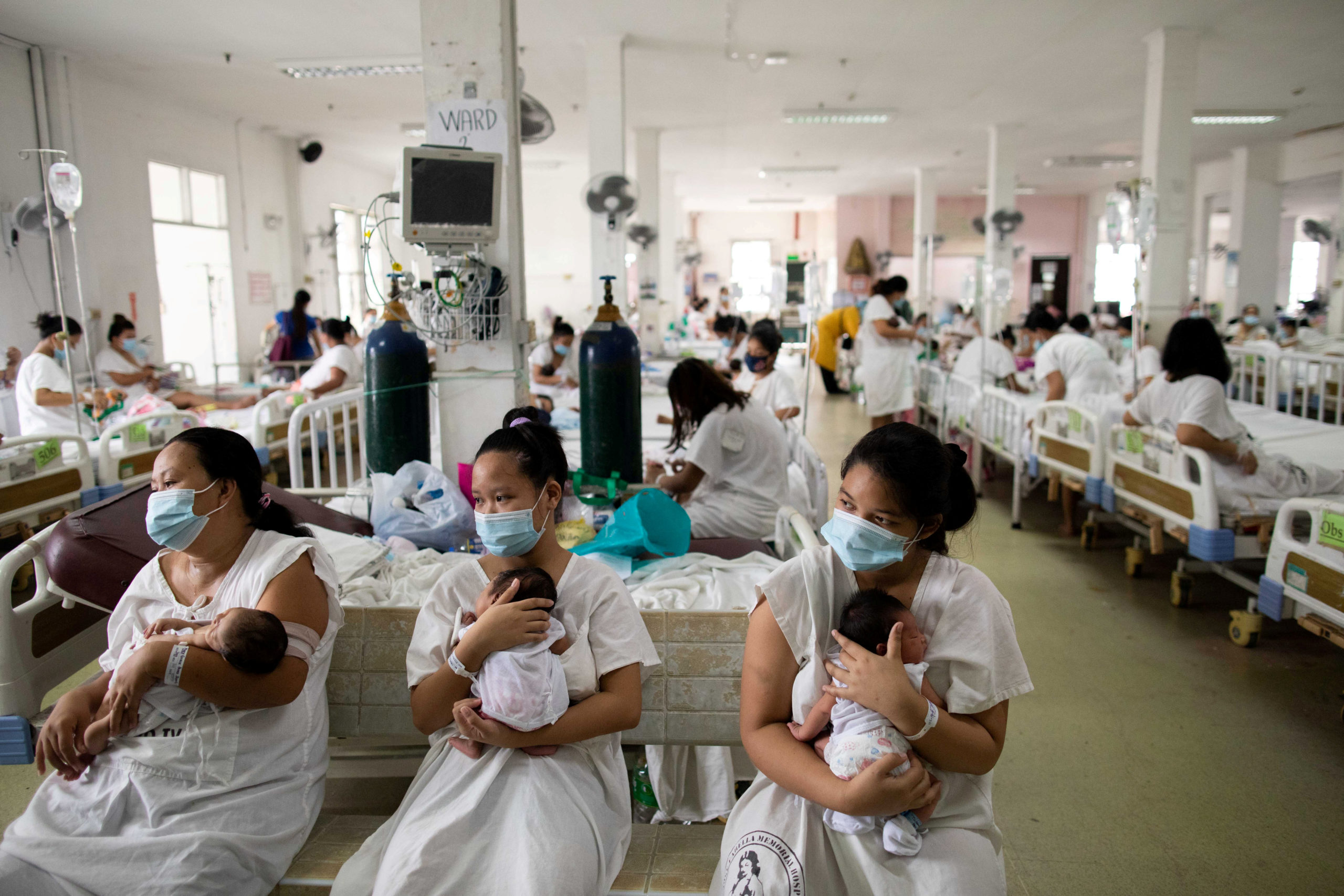
(FILE) Mothers carrying their newborn babies queue for a check-up inside the maternity ward of the government-run Dr. Jose Fabella Memorial Hospital, amid the coronavirus disease (COVID-19) outbreak, in Manila, Philippines, September 18, 2020. REUTERS/Eloisa Lopez
MANILA, Philippines — The Philippine population is projected to increase by only 0.3 percent or 324,000 in 2021, said the Commission on Population and Development (Popcom) on Monday.
In a statement, Popcom said that this annual “natural increase” is the lowest since the period between 1946 and 1947, when the population grew by 254,000.
“As such, Filipinos will number 109,991,095 at the end of 2021—lower by 2 million than earlier projections based on a 1.63% population growth rate or PGR,” it added.
Popcom noted that the natural increase in population in 2020 was 914,797, placing the population at the end of 2020 at 109,667,216. The natural increase in population during this year was at 0.79 percent.
“Natural increase,” according to Popcom, refers to the projection based on the number of births minus deaths in a particular time period. Popcom said it made the computations based on the Philippine Statistics Authority’s (PSA) vital statistics preliminary reports for the period spanning January 2020 to August 2021.
“Filipinos remain prudent by continuing to delay having children or forming families during the combined economic crisis and COVID-19 health emergency,” said Popcom Usec. Dr. Juan Perez III.
“Couples in growing numbers continue to avail of family planning commodities and services in all regions of the country, with 8 million users of modern family planning methods in 2020—an addition of about 500,000 from 2019,” he added.
Perez then emphasized that the last two years of low increases in population provide opportunities of attaining a more stable population that can support socio-economic development at the national and household levels if integrated population and development interventions are sustained.
“If integrated population and development measures are sustained, we can look forward to a more stable population that can effectively support Philippine development. Smaller family sizes need to be supported by a national living wage structure that also allows parents to save for their households’ unmet needs in food, housing and education” said Perez.
“Uneven regional wage structures only lead to individuals falling further behind than those in progressive areas such as the National Capital Region, CALABARZON, and Central Luzon,” he added.
Perez also said that the low 2020-2021 population growth enables a greater chance for the country and households to recover from the COVID-19 outbreak, with the national and local governments’ increased capabilities in providing quality services to Filipinos.
However, Perez bared that the agency’s projected population for 2021 does not yet cover international migration during the year and that the civil registration data as reported by PSA is also subject to underreporting and late reporting.
Perez assured that Popcom will update its projection as soon as data becomes available.
RELATED STORIES
Rising PH population shows need to intensify dev’t programs, PopCom says

